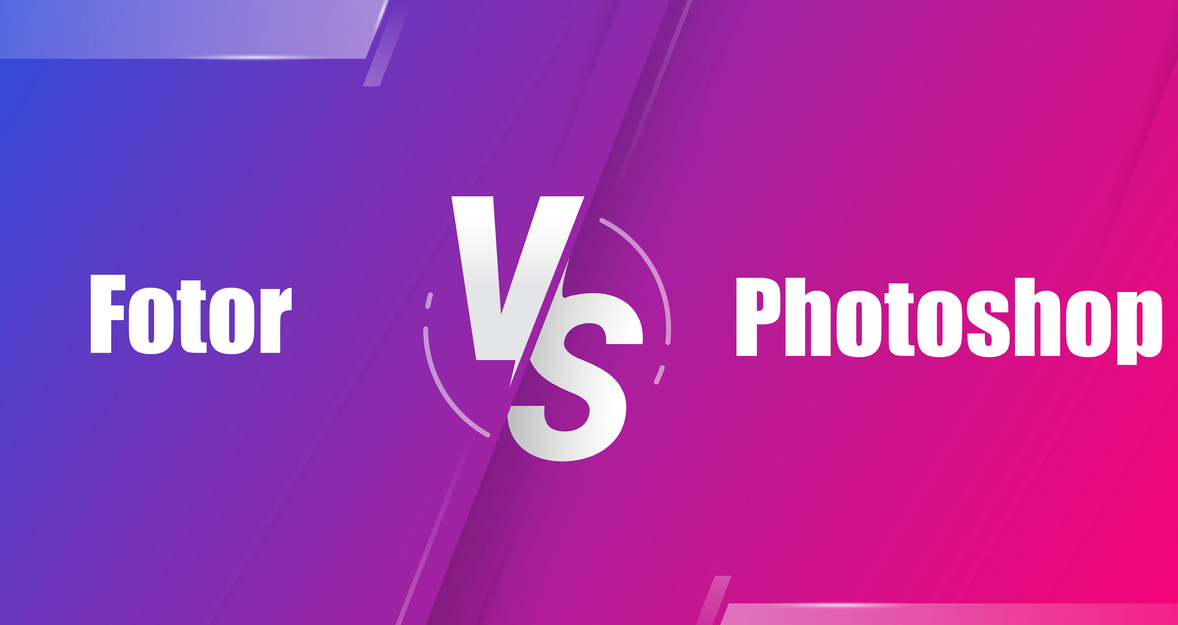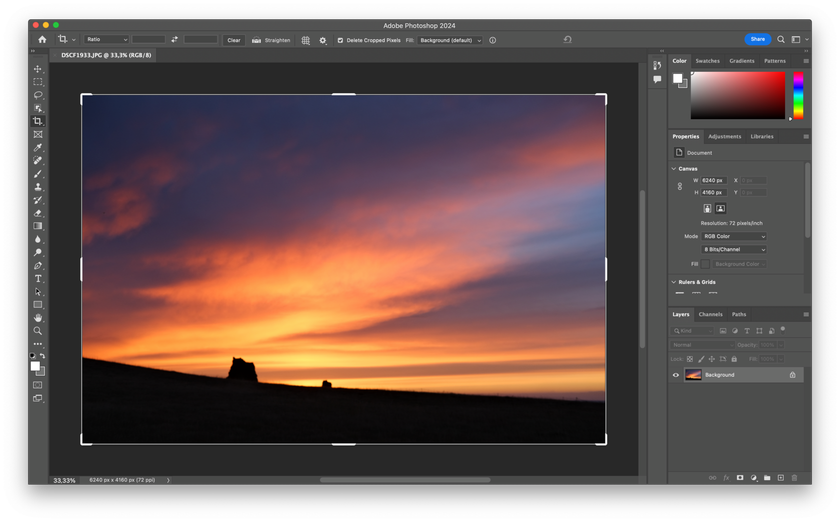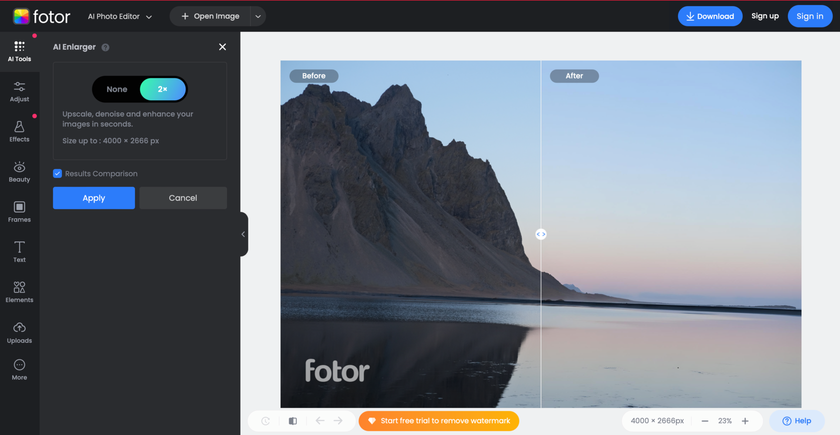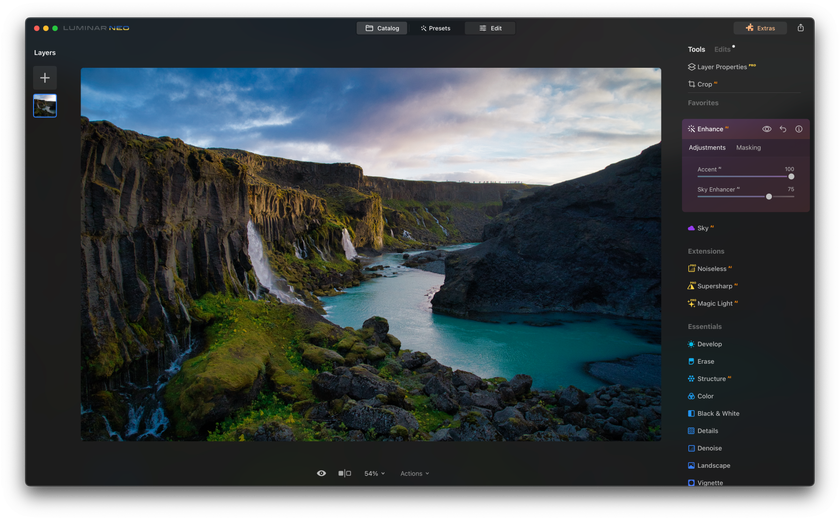Fotor Vs Photoshop: A Comprehensive Comparison
December 14, 2023

The significance of Adobe Photoshop and Fotor as photo editing software lies in their ability to enhance images and their impact on shaping visual narratives and helping professionals and hobbyists in their photographic craft.
From basic edits to advanced retouching, these platforms have become essential in transforming ordinary images into extraordinary visual stories. The versatility of these software solutions amplifies the potential for photographers to unleash their creativity. However, navigating the choices between them can be daunting, especially for those exploring the realm of photo editing for the first time or considering a switch from one to the other.
Throughout this comprehensive review, we delve deep into the strengths and weaknesses of Adobe Photoshop and Fotor. The aim is to equip you with the necessary insights to make an informed decision that aligns with your editing needs and preferences.
Adobe Photoshop: For and Against
Adobe Photoshop has long been the cornerstone of professional photo editing, setting the gold standard in the industry. However, its prominence does not imply a lack of limitations. Let's delve into the pros and cons of this software in detail.
Pros of Adobe Photoshop
Photoshop boasts a comprehensive range of tools for intricate and detailed editing. From basic adjustments like cropping and color correction to advanced features such as layers, masks, and blending modes, Photoshop offers unparalleled versatility.
Its widespread use in professional circles makes Photoshop a choice for many photographers and graphic designers. The familiarity with Photoshop's interface and tools within the industry creates a seamless workflow for collaboration and project sharing.
Photoshop's ability to work seamlessly with other Adobe products like Lightroom creates a cohesive editing environment. This integration allows for effortless transfer of files and a unified editing experience across the Adobe suite.
Photoshop supports various file formats, including RAW files, ensuring compatibility with different camera types and editing flexibility. Its advanced color grading tools, such as curves, levels, and adjustment layers, provide precise control over color manipulation and correction. Users can experiment with myriad creative effects and filters to stylize images, add textures, create unique visuals, and achieve artistic expression. Photoshop's text tools allow for intricate manipulation of text elements, offering a wide range of fonts, styles, and effects for designing graphics or incorporating text into images.
A large and active community of users and tutorials are available online, offering guidance, tips, and tricks for users at all skill levels. Adobe regularly updates Photoshop, introducing new features, performance enhancements, and improvements based on user feedback and technological advancements.
One of the significant advantages of this software is the seamless integration of numerous plugins that extend its functionalities. Luminar Neo stands out among these plugins, offering additional AI-powered tools that enhance the editing capabilities within the Photoshop workflow. Moreover, Photoshop users can integrate various other plugins like Nik Collection, DxO PhotoLab, and Topaz Labs to diversify their editing capabilities further.
Cons of Adobe Photoshop
While its vast array of features is advantageous, it also poses a challenge for beginners. Photoshop's steep learning curve can intimidate new users, requiring considerable time and effort to grasp its functionalities fully. Photoshop might seem overly intricate and feature-rich for basic edits or quick fixes, leading to a longer editing process than necessary.
Due to its extensive capabilities, Photoshop can be resource-intensive, demanding high system requirements. It might lead to slower performance or compatibility issues on older or less powerful computers, limiting accessibility for some users.
Photoshop's feature-rich environment might be excessive for basic edits or quick fixes, leading to a longer editing process than necessary. Some changes in Photoshop are irreversible, requiring users to meticulously save versions or use history states, potentially leading to accidental loss of work. Managing numerous layers in complex projects can become cumbersome, especially for users handling large-scale compositions.
The subscription model demands an internet connection to validate the software license regularly, which might inconvenience users in areas with unstable connectivity. While integration with other Adobe applications is beneficial, it also leads to dependency on the Adobe ecosystem for certain workflows and file compatibility. Files created or edited in newer versions of Photoshop might face compatibility issues when opened in older versions, causing inconvenience in collaborative workflows.
Adobe Photoshop operates on a subscription-based model, which might be a drawback for some users who prefer a one-time purchase. The subscription plans, starting at around $20.99 per month for individuals and higher for businesses, can be a recurring expense, especially if you edit images occasionally.
Fotor: Strengths and Drawbacks
Fotor, while overshadowed by Photoshop's prominence, presents advantages and disadvantages that cater to specific user preferences and editing styles.
Pros of Fotor
Fotor prides itself on its intuitive interface, making it an excellent choice for beginners. The software's easy-to-navigate layout and simple tools provide a hassle-free editing experience without compromising functionalities.
How much does Fotor cost? Here comes a surprise for photo editors who need to consider spending extra money on photo editing software more reasonably. If you edit pictures occasionally or have a limited budget, Fotor is for you because you can get it for free. However, there are paid premium plans. The Fotor pricing starts at approximately $3.33 monthly for annual subscription users to unlock additional features and resources.
Fotor integrates AI-powered features like smart retouching, portrait enhancements, and automatic adjustments, streamlining the editing process and delivering professional-looking results with minimal effort.
This software, available across multiple platforms, including web-based, desktop, and mobile versions, ensures flexibility and convenience for users to edit their photos seamlessly from various devices.
Fotor allows batch processing of images, enabling users to simultaneously apply the same edits or enhancements to multiple photos, saving time for repetitive tasks. The cloud storage feature in Fotor facilitates easy access to edited images across devices, ensuring that users can retrieve and continue editing from any location.
Cons of Fotor
While suitable for basic edits, Fotor needs more depth and complexity of advanced features in professional-grade software like Photoshop, limiting its potential for intricate editing. Users might be restricted by the limited customization options compared to more comprehensive software, hindering creativity for experienced or demanding users. Fotor supports a narrower range of file formats than more advanced software, potentially causing compatibility issues when working with specific file types.
The free version of Fotor includes a watermark on edited images, which might not be suitable for professional use or those seeking watermark-free photos. The free version displays advertisements, which can be intrusive and disrupt the editing experience for some users. Managing subscription renewals and upgrades might be cumbersome for some users, causing confusion or inconvenience during regeneration.
Some features in Fotor require an internet connection, impacting usability in offline environments or areas with limited connectivity. While AI-powered features are convenient, they might only sometimes deliver the desired results, as they rely on automated algorithms that may not cater to specific editing requirements. Users may experience occasional performance issues, such as lag or slower processing times, especially when handling larger files or performing complex edits.
Fotor's customer support may be less comprehensive and responsive than larger software companies, potentially causing delays in addressing user issues or queries.
Spotlight: Luminar Neo
If you're new to photo editing, we recommend you also try Luminar Neo. It has a convenient and understandable interface, many high-quality basic tools, and a wide range of AI-powered functions that will help you master the full range of editing possibilities quickly.
If you are already familiar with Adobe Photoshop, try integrating Luminar Neo as a plug-in to it, and you will be pleasantly surprised at the level of editing your images will reach.
Bottom Line
Adobe Photoshop stands tall as the industry behemoth, offering an exhaustive array of tools and functionalities tailored for professionals seeking intricate and detailed editing capabilities. Its integration with Luminar Neo adds an extra layer of depth, amplifying its prowess within the editing realm. However, its steep learning curve and subscription-based model might be deterrents for beginners or budget-conscious individuals.
On the other hand, Fotor shines brightly as a user-friendly, budget-friendly alternative. Its intuitive interface, one-click enhancements, and affordable pricing cater favorably to beginners and those seeking a hassle-free editing experience. However, its limited advanced features and lesser industry recognition might pose limitations in professional settings.
Choose wisely, edit passionately, and let your visual stories unfold through the lens of your preferred editing companion.








